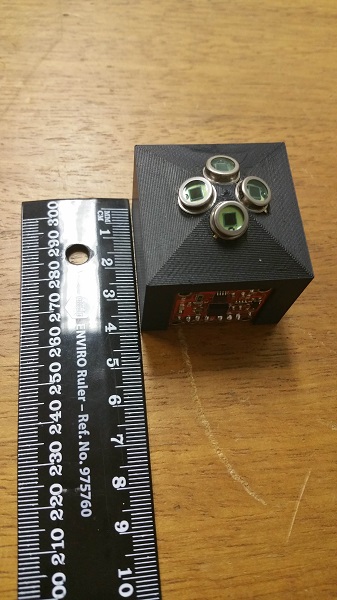(This article written by Caleb Radford of South Australian media The Lead is an authorized repost.)
An indoor positioning system that uses LED lighting to pinpoint location is being developed for use in the retail industry.
Researchers from the University of South Australia have developed a “GPS like” indoor positioning system that tracks movement with greater accuracy than contemporary RFID and Wi-Fi based systems.
Developer Siu Wai Ho said LiPo used the light from energy efficient LED bulbs to triangulate a person’s location within a building.
He said other methods of indoor positioning such as Wi-Fi were only accurate to within 1-2 meters and were easily hampered by radio frequencies from nearby devices, power sources or other wireless electronics.
“Our system is more accurate with an error margin of 10cm and unlike some positioning systems our algorithm can calculate the orientation at the same time,” Dr. Ho said.
LiPo uses LED lights as transmitters and photodetectors as receivers because they are both common items in modern societies.
Photodetectors are a key component for capturing light and are also commonly found in smart phone cameras.
The system uses a specially designed receiver (right) to measure light intensity that is able to calculate position and orientation.
Dr. Ho said although it currently required a unique receiver, he hoped to integrate the technology with the photodetectors in mobile phones.
He said the system would be ideal for supermarkets because it allowed them to provide customers with relevant information about items nearby.
“They can use the system to put advertisements to the users depending on their location,” Dr. Ho said.
“If you are in a supermarket you want to see some information for a product in front of you. One or two meters of error is still too big because it maybe gives you a product you are not in front of.
“Our orientation is very accurate and robust – within five degrees of error. It doesn’t depend so much on environmental changes.”
LiPo’s unique algorithm removes the need for a server to control the LED lights, which would store and track a user’s movements.
It uses a closed form solution, allowing it to calculate the light intensity in 0.01 seconds.
Dr. Ho said there were many more applications for the technology such as the identification of objects or machinery in factories, movement aid tools for the elderly and trackers for museums to provide relevant information to tourists as they passed by exhibits.
“An indoor positioning system has so many potential applications that still can’t be imagined but only after you build the system you can come up with more applications out of it,” he said.
“At this moment we have developed a prototype of the system. We are contacting different industries and some of them have seen our demonstration before – we are still discussing how we can collaborate and commercialize.
“Our plan is to have the product ready in 2017 but we are still negotiating.”
South Australia’s capital Adelaide has three long-standing public universities, Flinders University, University of South Australia, and the University of Adelaide, each of which are consistently rated highly in the international higher education rankings.












